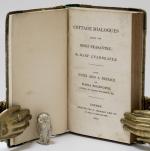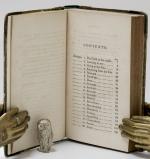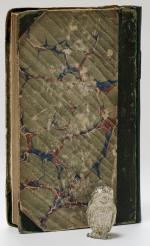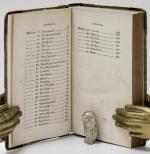Leadbeater, Cottage Dialogues Among the Irish Peasantry.
Leadbeater, Cottage Dialogues Among the Irish Peasantry.
|
Leadbeater, Mary / Edgeworth, Maria (Notes and Preface). Cottage Dialogues Among the Irish Peasantry. With Notes and A Preface by Maria Edgeworth, Author of Castle Rackrent, &c. [‘Glossary and Notes’ from page 269 to 343]. First Edition. London, Printed for J. Johnson and Co., 1811. 17 x 10 cm. v, (4) [TOC], 343 pages. Rebacked in 2022 using the original boards. New matching green cloth spine and black spine label. Gilt title. See images provided. Very good condition. New spine and end papers. Rebacked in 2022. Original boards worn, rubbed and bumped. Internally dust dulled. Faint blind stamp (’ Birkbeck College Library’) on first blank and title page. Numbers in pencil on verso of title page. Corner of page 73/74 missing, not affecting text. Small paper losses to page 103/104, not affecting text. A very nice copy of this very scarce publication. WorldCAT lists only one copy of the 1811 First Edition. Mary Leadbeater (1758 – 1826) was an Irish author and diarist, born in Ballitore, Athy, County Kildare, Ireland. She was the daughter of Richard Shackleton (1726-1792) by his second wife, Elizabeth Carleton, and granddaughter of Abraham Shackleton, schoolmaster of Edmund Burke. Her parents were Quakers. She was thoroughly educated, and her literary studies were aided by Aldborough Wrightson, a man of great ability who had been educated at Ballitore school and had returned to die there.
Our price: EUR 495,-- |

|




